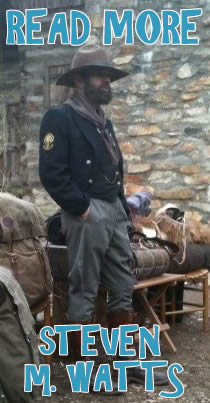Don’t get your panties in wad over this article just yet, it probably isn’t going to go the way you think based on the title.
If you haven’t seen the news recently, here is a link to an article and video from a local news report about a 17 year old lost skier from New England that builds a snow cave to survive the elements for 2 days. Not much in details, but he is crediting “reality TV” for the shelter tip that saved his life. Thank God he is alive!
This young man and his story will be a lasting reminder of survival (TV) and how (on occasion) it can help. I wonder what influence this will have on the public and their perception of where to get training… This news report credits Dual Survivor and discusses the specific survival tip from show. Is there a lesson here. Absolutely.
However, the tougher lessons come from the events that don’t have a happy ending. This one breaks my heart and is worth the reminder that it is the small things that can get you. I can’t help but wonder, what if that 17 year old had been on a hike in the rain and not skiing in the snow what tips from TV would have helped…
Questions Remain After Ozark Trail Deaths
Lack of Rescue Information Leaves Area Residents Concerned
More than five weeks after an Illinois man and his two sons died on the Ozark Trail in Reynolds County, questions regarding the tragedy are still regularly being raised.
Two rather general questions that are most often voiced demonstrate the frustration many people still feel concerning the matter:
– How can three people die from cold on a trail that runs through the center of our county and is surrounded by farm homes?
– Was enough done to try to save the father and sons?
This article is not meant to cast dispersion on any group or individual, but to give further information so people can better understand the conditions that brought about the death of the three, and the efforts that were taken to rescue them.
A Father/Son Walk
David Decareaux, 36, and his sons, Dominic, 10, and Grant, 8, left their rented cabin at Brushy Creek Lodge about 10:30 a.m. for what they called “a walk to the top of the hill,” in one person’s report.
It was not supposed to be an extended hike, and the three did not dress for such. They took with them two walking sticks, a flashlight, David’s iPod, and Grant’s backpack containing snacks and water – and their four-month-old lab, Bear.
The “top of the hill” would have meant a one-half-mile climb to the ridge where the Brushy Creek trail intersects the Ozark Trail on its way between the J Highway Trailhead and Sutton Bluff, 11 miles south.
For whatever reason – possibly due to something as simple as the family’s sense of adventure – the three went farther than anticipated and were met by a local resident at 2 p.m. at the top of Sutton Bluff, eight miles from their cabin.
The Trail Back
The original report was that the local resident offered the three a ride and was turned down. That report has since been discounted. The man only spoke briefly with the three and learned they were camping at the Lodge.
When he returned back past the place they had met, the hikers were already back on the trail.
By that time, a storm which was supposed to pass through the area between 3:30 and 8 p.m. was already arriving.
The ridge above Sutton Bluff would have been the last place that Decareaux could have accessed a cell tower with his iPod – he may, or may not, have been able to check the changing weather.
From Sutton Bluff, the Trail runs within shouting distance of County Road 907 (also known as the Old CC Road) for three miles before dropping down into what is locally known as Rubles Hollow. The drop is two miles in distance.
At the bottom of the hollow the Trail crosses the Missouri Branch – usually a dry creek, but with much rain it turns into a rushing stream a grown man would have difficulty crossing.
The trail then climbs another ridge before dropping another two miles down into Hippy Hollow where it crosses an even larger stream – Gunnis Creek.
From Gunnis Creek, the Trail climbs a half-mile up to a third ridge, where it intersects County Road 845 before continuing on another three miles to J Highway.
A quarter-mile down CR 845, the connector trail to the Lodge cuts off into the woods, just a narrow path marked by the traditional reflective Trail signs attached to trees which help keep hikers on the path.
The Search Begins
Around 4 p.m. the local resident who had spoken to the hikers at the Bluff called Brushy Creek Lodge to see if they had returned to the cabin safely.
Learning the hikers were still out hiking and it was getting dark, Lodge personnel set out on foot to see if they could find them.
It had then been raining about three hours – the storm had moved in more than two hours earlier than forecast.
By 7 p.m., the searchers had returned. They had traveled the Trail all the way to Sutton Bluff and had not found Decareaux and his sons.
The experienced hiker had done what he needed to do – and what his wife had first predicted when told they were missing. He had found some form of temporary shelter for himself and his boys until the storm passed.
Since there were no buildings or caves along the Trail, he had necessarily had to leave it to find a low-hanging cedar tree or blowdown rootwad large enough to shelter the three of them, or a batch of downed timber they could dig in under.
The Search Intensifies
At 7:07 p.m. 911 dispatch received a call from the Brushy Creek Lodge reporting the missing hikers. By 7:30 the sheriff’s department, ambulance department and Northern Reynolds County Fire Department had responded and a command center was being set up in the Sutton Bluff area.
Sheriff’s deputies were dispatched to run all the local county roads, stopping at every trail crossing (there are also several equestrian trails and county roads in that area in addition to the Ozark Trail).
Brushy Creek Lodge personnel had returned to the Trail on horseback and were riding it all the way back to the Bluff again.
Forest Service personnel responded to a request for help, bringing their ATV which, when added to the ambulance department’s Kubota, gave the search effort two off-road vehicles – in addition to several area residents on their own ATVs.
Five hours of searching turned up no sign of the missing hikers.
In addition, the storm had not moved through the area. Instead, it stalled over the Ozark Plateau, dropping more than four inches of water by the time it ended at about 2 a.m. the next morning.
High Water
As the rain and high-country runoff increased, Brushy Creek turned into a roaring river, cutting off J Highway access to the search area for man, horse and vehicles.
Soon, the Missouri Branch and Gunnis Creek did the same for the two main hollows by which the searchers were accessing the Trail.
The two-mile drop from the Old CC Road along County Road 828 to the Trail crossing in Rubles Hollow has nine different low-water crossings.
By midnight, the water in the third crossing down was already coming over the hood of the ambulance department’s Kubota.
As the Brushy Creek riders were crossing Gunnis Creek on their last pass along the trail, the horses barely made it across the rushing stream.
The five-mile stretch of the Ozark Trail from Sutton Bluff to County Road 845 was completely cutoff by high water – and somewhere along those five miles, David Decareaux and his sons were huddled together, trying to stay warm and out of the storm.
The search effort was called off at 12:37 a.m., with plans to reconvene the next morning at 7 a.m.
A handful of searchers remained, searching through the night, hoping to find the hikers along the areas of the trail still accessible.
A Cairn of Rocks
Searchers were back on the scene by 6:34 a.m., waiting for the high water to recede enough to renew the search.
At 8:55 a.m. searchers found encouraging evidence that the hikers were still alive.
At the bottom of Rubles Hollow, where the Trail crosses C.R. 828, searchers found a neatly-formed cairn of rocks on the north side of the road along the path.
Atop the pile of rocks were orange peels, and alongside the rocks was Grant Decareaux’s backpack.
The rock cairn and items had not been there the night before on the last pass by the horseback riders.
Sometime in the early morning hours, the father and his sons had hit the trail again – either because the rain had stopped or the plunging temperatures had forced them to start moving due to the cold.
The temperature had dropped from 62 degrees when they left the cabin the morning before, to 30 degrees by midnight.
The hikers would have had to cross Missouri Branch, climb and descend another ridge, cross Gunnis Creek and climb another ridge before getting to County Road 845.
At that point, they would have had to move down the road a quarter-mile and find the trailhead path leading them back to the Lodge.
They made it to the county road, but evidently they could not find the path due to the total darkness created by the dense cloud cover.
Decareaux’s flashlight and iPod both had dead batteries when his body was found.
Whether out of desperation, or due to the effects of hypothermia, the father and sons returned to the Ozark Trail, traveling north toward the J Highway crossing. One of the walking sticks was reportedly found on the connecting road where they would have searched for the secondary trail.
Their bodies were found about 9:30 a.m. Sunday morning, lying along the Ozark Trail a mile-and-a-half past the turnoff they could not find.
David Decareaux had found a way to get his boys farther than they needed to go to survive, but he had been unable to find the final turnoff to finish the task.
Too Much CPR?
When the bodies were found, the dog had been lying with the two boys, sharing its warmth with them.
The estimated time of death for the father was about 3 a.m.
Although there were no conclusive signs of life, ambulance personnel immediately began CPR and warming the bodies of the children in hopes of reviving them.
Verified reports exist of persons, especially children, who have been revived after being found with body temperatures as low as 60 degrees.
The CPR continued as the boys were being carried out of the woods and transported to the hospital. There they continued until the brothers were pronounced dead around 2 p.m.
Some criticism has been voiced concerning the extended CPR by the medical personnel.
According to medical protocol, once CPR has been initiated in a hypothermic situation, it cannot be discontinued until the body temperature of the patient has reached normal levels (94-95 degrees).
In this instance they were never able to get the children’s bodies to the required warmth, even with the help of the hospital’s Bair Hugger, a blanket that is continually refilled with warm air by a heat pump.
Was Enough Done?
As the story of the unsuccessful search effort made the rounds throughout the county, it was accompanied by information critical of its scope.
Although representatives of the forest service, northern district firefighters, deputies and ambulance personnel were involved, other groups would have been willing to help but were not asked.
Neither the Bunker or Ellington fire departments were asked to join the search, nor was the Tri-County Equestrian Rescue team.
In addition, according to one account, the sheriff reportedly turned down an offer from the Highway Patrol of water patrol officers and equipment and a heat-seeking helicopter.
Sheriff Tom Volner discounts such criticism, stating that he never turned down help from the Patrol and, in fact, had a helicopter coming Sunday morning when the bodies were found.
As for calling for additional help, the sheriff said he deemed the flash-flooding situation too risky, possibly causing injury or death to searchers.
Sergeant Craig Ponder of the Highway Patrol responded to the accusation of turned-down help with the following statement: “To the best of my knowledge, Sheriff Volner did not turn down an offer of help for either water patrol or a helicopter.”
Sgt. Ponder did acknowledge that he had been at the sheriff’s office during the Saturday night search and had sent Trooper Todd Weekley to the incident command center to be of assistance.
In the same sense that the sheriff did not overtly turn down offered help, neither did he ask the trooper for the help his presence represented and which would have been readily available upon his request.
Could the father and sons have been saved if searchers were at the Brushy Creek turnoff throughout the night? Possibly.
Were Reynolds County and its communities left open for ridicule because they could not save three people hiking less than a mile from warm homes? Maybe.
Such questions must be answered by each person individually according to his own understanding of the situation.
Hopefully, this article has helped add information that will aid in finding such answers.
In the end, the fact remains that it was more than 12 hours of downpouring rain coupled with temperatures dropping below freezing that resulted in the death of the father and his two sons – and all human effort to prevent their death, either by themselves or others, was just not enough.








No intelligent comments yet. Please leave one of your own!